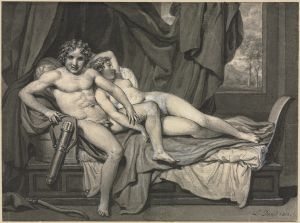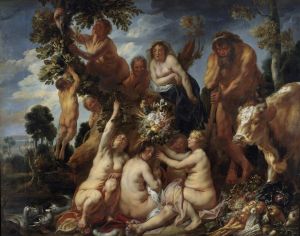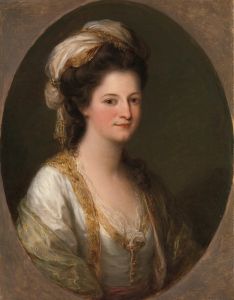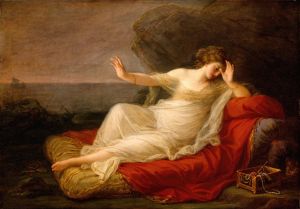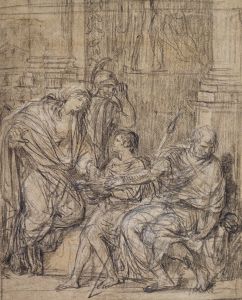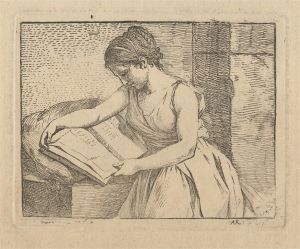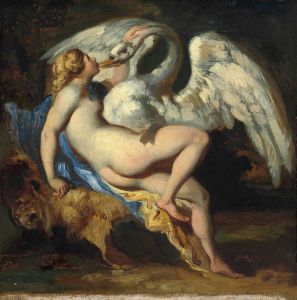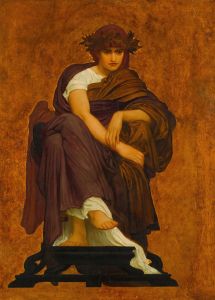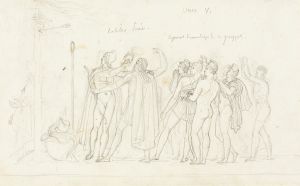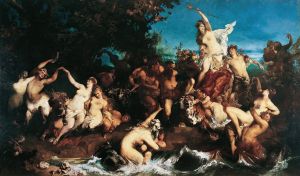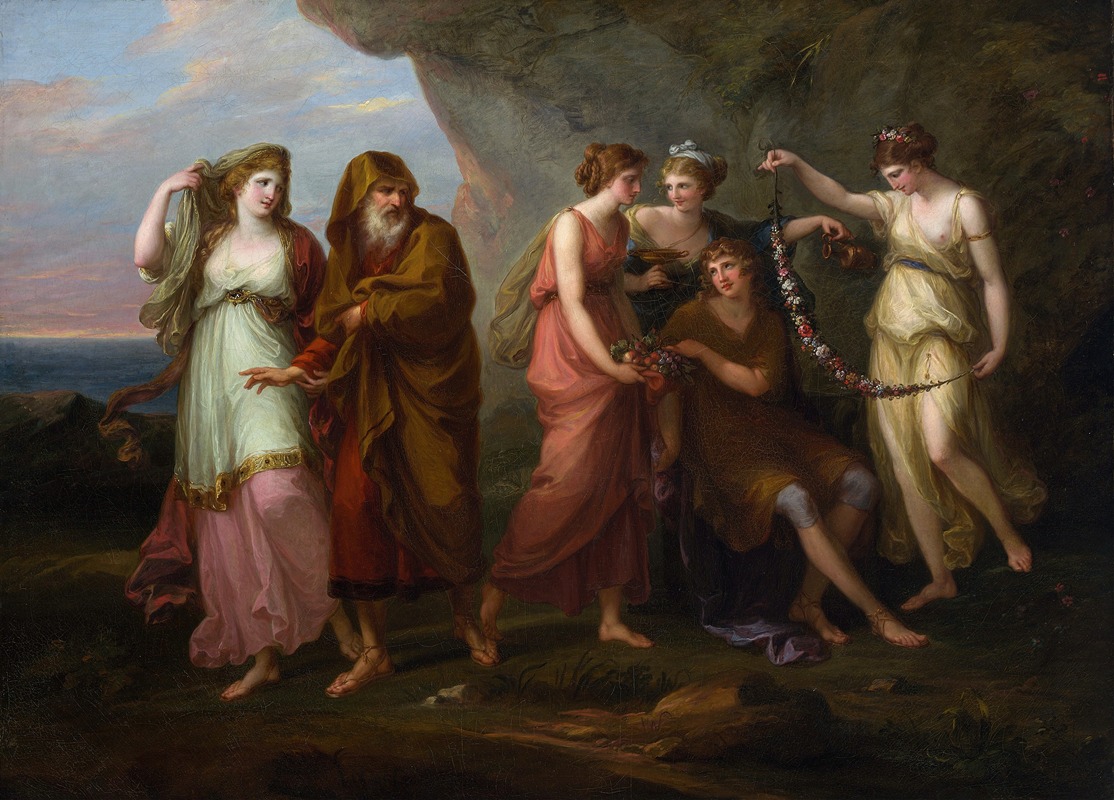
Telemachus and The Nymphs of Calypso
A hand-painted replica of Angelica Kauffmann’s masterpiece Telemachus and The Nymphs of Calypso, meticulously crafted by professional artists to capture the true essence of the original. Each piece is created with museum-quality canvas and rare mineral pigments, carefully painted by experienced artists with delicate brushstrokes and rich, layered colors to perfectly recreate the texture of the original artwork. Unlike machine-printed reproductions, this hand-painted version brings the painting to life, infused with the artist’s emotions and skill in every stroke. Whether for personal collection or home decoration, it instantly elevates the artistic atmosphere of any space.
Angelica Kauffman’s painting Telemachus and the Nymphs of Calypso is a work by the renowned Swiss-born Neoclassical artist, who was active during the late 18th century. Kauffman, celebrated for her historical and mythological subjects, created this piece as part of her broader exploration of classical themes inspired by ancient literature and mythology.
The painting depicts a scene from Homer’s Odyssey, specifically from the narrative involving Telemachus, the son of Odysseus, and the nymphs of the goddess Calypso. In the epic, Calypso is a figure who detains Odysseus on her island, Ogygia, for several years. While the exact moment from the story that Kauffman chose to illustrate is not entirely clear, the painting reflects her characteristic style of blending classical themes with a refined, elegant composition.
Kauffman’s work is notable for its focus on emotion and narrative clarity, and Telemachus and the Nymphs of Calypso exemplifies these traits. The figures in the painting are rendered with grace and poise, emphasizing their interactions and the emotional undertones of the scene. The nymphs are portrayed with idealized beauty, consistent with Neoclassical aesthetics, while Telemachus is shown as a youthful and contemplative figure. The composition likely includes symbolic elements that align with the moral and philosophical themes of the Odyssey, such as loyalty, temptation, and the journey toward self-discovery.
Angelica Kauffman was one of the founding members of the Royal Academy of Arts in London, and her work was highly regarded during her lifetime. She was particularly admired for her ability to convey complex narratives through her art, often drawing on classical literature and history for inspiration. Her paintings frequently featured strong, intellectual female figures, and she was a pioneer for women in the male-dominated art world of the 18th century.
The exact date of creation for Telemachus and the Nymphs of Calypso is not definitively documented, but it is consistent with Kauffman’s broader body of work from the late 18th century. The painting is an example of her skill in combining classical subject matter with the refined, sentimental style that characterized much of her oeuvre.
As with many of Kauffman’s works, the painting reflects her deep engagement with classical antiquity and her ability to translate literary sources into visually compelling compositions. It remains an important example of her contribution to Neoclassical art and her role in shaping the visual culture of her time.





